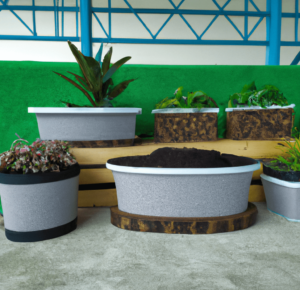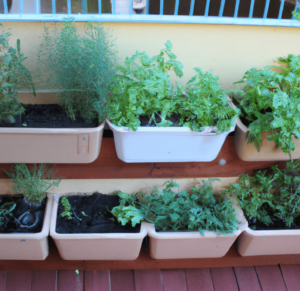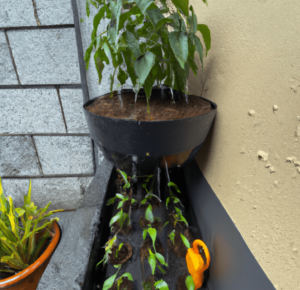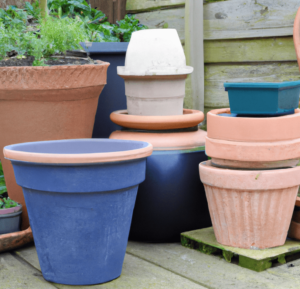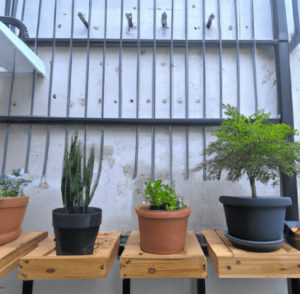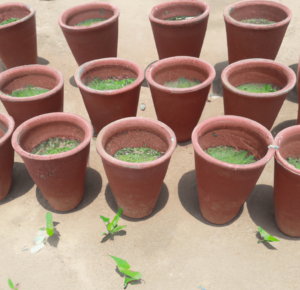The growth and health of plants in containers depend on the potting soil. To choose the best potting soil for your plants, you must be aware of the various types available and comprehend their chemical makeup. Your choice of soil will rely on the particular requirements of your plants and the environment they will be growing. Root rot or stunted plant growth might arise from using the incorrect type of soil. So, here’s what you need to know about understanding and using different types of potting soil in planters!
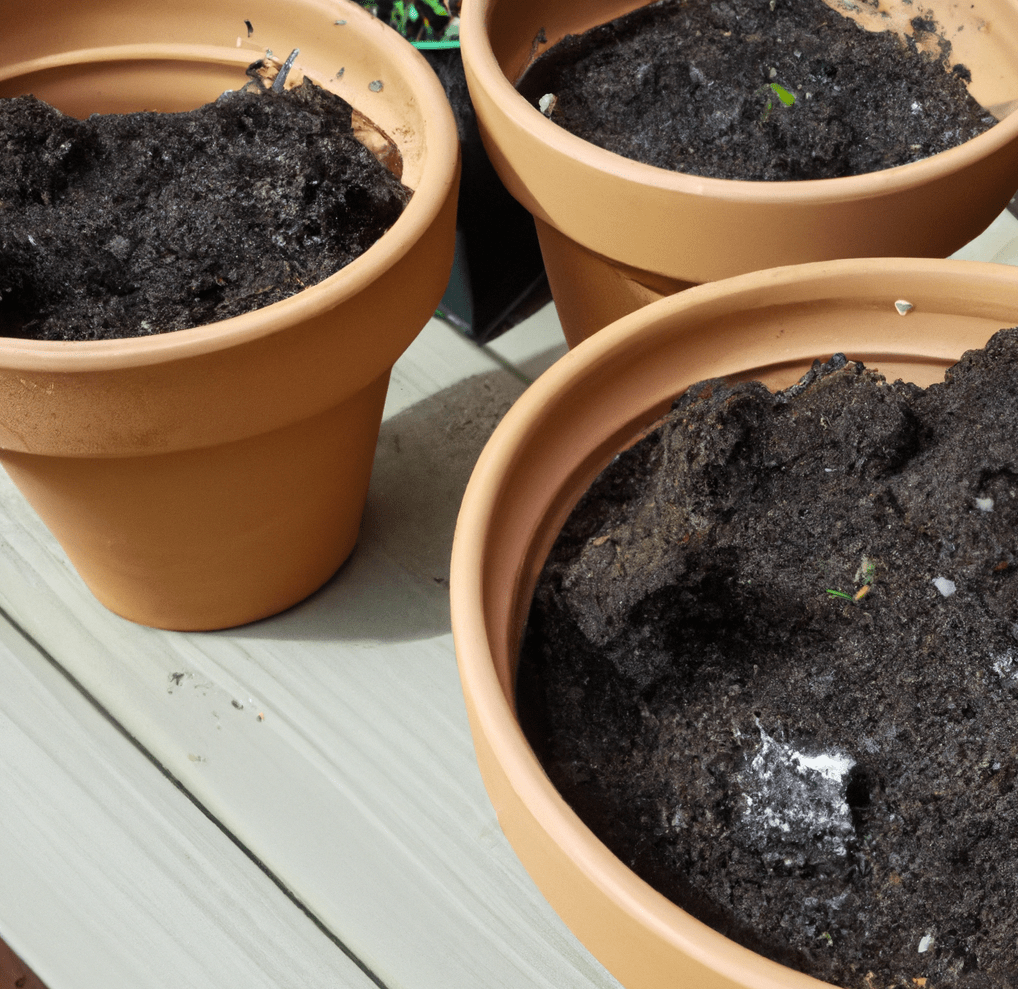
Types of Potting Soil
Whether or not you’re using biodegradable planters, the type of potting soil you use is crucial to understanding and using different types of potting soil in planters:
- All-Purpose Potting Soil: The most popular kind of potting soil is all-purpose potting soil. It works well for a variety of plants and is frequently used for perennials, annuals, vegetables, and herbs. The components of all-purpose potting soil include peat moss, vermiculite, perlite, and other organic compounds. It retains moisture well enough for most plants and is lightweight and good-draining.
- Cactus and Succulent Potting Soil: Cactus and succulent potting soil are made for plants that need less moisture retention and great drainage. A combination of sand, perlite, and other coarse minerals are frequently used to create this kind of soil. It is perfect for plants like cacti and succulents that are prone to root rot.
- Seed Starting Potting Soil: This soil is designed specifically for the germination of seeds. It is made to offer seeds a breathable, loose, and well-draining environment in which to thrive. In order to create this kind of soil, peat moss, vermiculite, and perlite are frequently combined. It is perfect for planting vegetable and flower seeds because it is devoid of weeds and disease germs.
- Organic Potting Soil: Natural ingredients like compost, peat moss, and coconut coir are used to make organic potting soil. It is perfect for gardeners that favor using organic practices as it is devoid of synthetic fertilizers and toxins. A wide variety of plants can be grown in organic potting soil, which also offers good moisture retention and drainage.
- Special potting soil: This is created for particular plant varieties and growing environments. For instance, there are potting soils made for plants that need a lot of nutrients, like tomatoes and peppers, and potting soils made for plants that like acid, like blueberries and azaleas. To suit the particular requirements of the plants being produced, specialty potting soil may include certain components like bone meal, blood meal, or lime.
Keep these in mind as you’re learning more about understanding and using different types of potting soil in planters.
The Different Types of Potting Soil That Are Available, Such As Peat Moss-Based, Coco Coir-Based, Compost-Based, and Vermiculite-Based.
There are different types of potting soil that you can use in your planters as you’re understanding and using different types of potting soil in planters:
- Peat Moss-based Soil: It’s manufactured from sphagnum moss that has partially decomposed and is taken from bogs. Peat moss can hold a lot of water and is excellent at aerating the roots of plants. It’s a great option for plants like blueberries, azaleas, and rhododendrons that like acidic soil.
- Soil Made with Coco Coir: The fibrous coconut husk is used to create soil that is based on coco coir. Gardeners are increasingly using it as an environmentally friendly substitute for soil that is based on peat moss. A sustainable substitute for peat moss, coco coir offers outstanding aeration, excellent water retention, and sustainability. It’s a great option for plants like succulents and cacti that like soil that drains properly.
- Compost-Based Soil: Compost-based soil is created from organic material that has decomposed, like grass clippings, leaves, and food leftovers. It’s a great option for gardeners who wish to increase the fertility and structure of their soil. A compost-based soil is nutrient-rich, effectively retains water, and offers good root aeration. It’s a great option for growing herbs and vegetables.
- Soil Made of Vermiculite: Vermiculite is made of a mineral that has been heated to cause it to enlarge. It is portable, excellent at storing water and effectively aerates plant roots. For plants like peppers, tomatoes, and cucumbers that demand well-drained soil, vermiculite-based soil is a great option.
Understanding and using different types of potting soil in planters is understanding the options you have above.
The Pros and Cons of Each Type, As Well as the Types of Plants That Work Best in Them
As you’re understanding and using different types of potting soil in planters, keep these pros and cons in mind:
- Large plants can be grown in garden beds, but they need a lot of work and may not have good soil. Similar advantages are provided by raised garden beds, but building one can be more expensive.
- Small places are ideal for container gardening, but larger plants might not thrive there and frequent watering is sometimes necessary.
- Although potting mix is inexpensive, it can be pricey and can need more frequent fertilizing. It’s lightweight and has adequate drainage. It is advised to add compost and peat moss to garden soil or potting soil to improve the soil’s quality and nutrient content.
Overall, each technique has advantages and disadvantages, and the kinds of plants that thrive in each one are different. Before selecting a strategy for your garden or potted plants, it’s crucial to take into account the particular requirements of the plants you wish to grow as well as your available space, money, and level of knowledge when you’re learning about understanding and using different types of potting soil in planters.
Understanding Soil pH
A key component in understanding and using different types of potting soil in planters in your garden is the soil pH, which is a measurement of the concentration of hydrogen ions in the soil solution. A pH number less than 7 is considered acidic, and a pH value over 7 is considered alkaline. Although some plants prefer a more acidic or alkaline environment, most plants thrive in soil with a pH between 6.0 and 7.0.
The availability of nutrients to plants depends on the pH of the soil. Only within a specific pH range are some nutrients in the soil-such as nitrogen, and phosphorus, and potassium-available to plants. Even if these nutrients are present in the soil, they might not be accessible to the plants if the pH is too high or low. Plants may consequently display signs of nutritional shortages including stunted growth or fading foliage. The microbial activity and soil structure can both be impacted by soil pH. A low microbial population in acidic soil may make it difficult for plants to absorb nutrients.
On the other hand, overly alkaline soil could have a weak structure, making it challenging for water and air to infiltrate the soil. Any gardener who wishes to provide the optimal growing conditions for his plants must therefore comprehend the notion of soil pH:
- Gather soil samples from different parts of your garden and combine them to test your soil.
- Then, to determine the pH, according to the directions on the soil testing kit. Since pH can change with changes in weather and other conditions, it’s crucial to test your soil at different periods of the year.
- You can change the pH of your soil using compost or fertilizers if it is too high or low. The pH of acidic soil can be raised by compost whereas the pH of alkaline soil can be lowered by compost. To change the pH, organic fertilizers like bone meal and fish meal can also be employed.
- You might need to add lime to your soil to improve the pH if it is too acidic. The pH of your soil may need to be lowered by adding sulfur if it is extremely alkaline.
When adding soil amendments, it’s crucial to carefully follow the directions because too much can hurt your plants. This is important when you’re first learning about understanding and using different types of potting soil in planters.
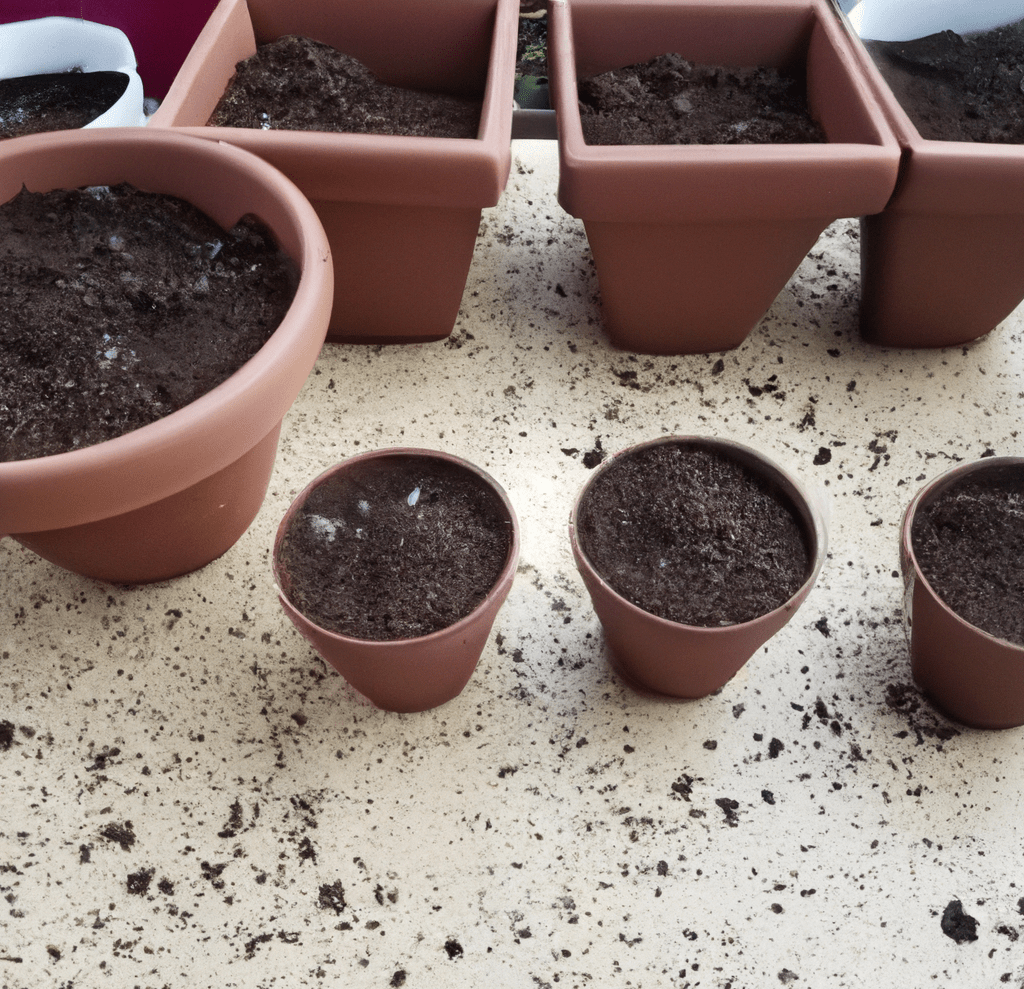
Customizing Potting Soil
A vital element in plant growth is potting soil, which roots use to anchor and absorb nutrients. However, not all plants require the same type of soil, so you might not be able to meet your plants’ individual demands by using a generic potting mix. Making potting soil to your specifications can enhance plant health, growth, and overall attractiveness. Customizing potting soil’s essential in understanding and using different types of potting soil in planters.
Tips on How to Add Different Types of Amendments
Here are some pointers for enhancing soil quality by adding various amendments when you’re understanding and using different types of potting soil in planters:
- Peat Moss: Peat moss is a typical soil additive that helps with aeration and water retention. Additionally, it has a little acidity, which makes it perfect for plants that demand a lower pH level. Mix equal parts of peat moss and compost or dirt into your potting soil.
- Compost: Compost is an organic soil amendment that is rich in nutrients and adds organic matter and necessary minerals to the soil. Furthermore, it enhances soil texture and aids with moisture retention. Mix compost with an equal amount of soil or sprinkle a thin coating of it on top of your potting mix to add it to your potting soil.
- Fertilizers: Fertilizers are crucial for the growth and development of plants because they supply vital minerals like potassium, phosphorus, and nitrogen. Fertilizers come in two varieties: organic and synthetic. Natural materials like worm castings, fish emulsion, and bone meal are used to make organic fertilizers. Chemical substances are used to create synthetic fertilizers, which provide an immediate boost in nutrients. Follow the manufacturer’s instructions and incorporate nutrients into your potting soil before planting.
- Perlite or Vermiculite: Lightweight, porous materials that enhance soil drainage and aeration include perlite and vermiculite. Vermiculite is a form of mica mineral, whereas perlite is created from volcanic glass. Mix equal amounts of your potting soil with perlite or vermiculite before adding it.
As you’re understanding and using different types of potting soil in planters, choose the best amendment suited for your garden’s needs and your preferences.
Bottom Line: Understanding and Using Different Types of Potting Soil in Planters
Whether it’s a balcony, patio, or inside your home, growing plants in pots or planters is a terrific way to add greenery. No matter what planters you use, from self-watering planters in your garden to vertical gardening trellises, the health and development of your plants can be significantly impacted by using the incorrect type of potting soil because not all soils are created equal.
Choosing the proper potting soil for your planters and understanding how to use it is crucial for developing strong, healthy plants. You can construct a garden that not only enhances the appearance of your home but also gives you access to fresh herbs, fruits, and veggies by picking the right sort of soil and spending the time to pot your plants properly. Spend some time researching and selecting the best potting soil for your plants, and you can reap the benefits of a garden that is doing well.
Understanding and Using Different Types of Potting Soil in Planters FAQs
What function does potting soil serve in planters?
The potting soil used affects the growth and well-being of plants in containers. For the unique needs of your plants and the location in which they will develop, selecting the proper sort of soil is essential. The wrong kind of soil can cause issues like root rot or reduced plant growth.
What are the various potting soil varieties that can be used in planters?
All-purpose potting soil, cactus, and succulent potting soil, seed beginning potting soil, organic potting soil, and special potting soil are some of the potting soil varieties that can be used in planters. Each kind is made with special ingredients and tailored for various plant types and growing conditions.
What are some examples of potting soil kinds that can be used in planters?
Peat moss-based soil, coco coir-based soil, compost-based soil, and vermiculite-based soil are a few types of potting soil that can be used in planters. Every kind of soil has distinctive qualities and is best suited for a certain kind of plant.
What are the benefits and drawbacks of each variety of potting soil, and what plants grow best in it?
Each variety of potting soil has benefits and drawbacks of its own. For instance, all-purpose potting soil is convenient for a range of plants since it is light and well-draining. Cactus and succulent potting soil, on the other hand, is ideal for plants that require excellent drainage and minimal moisture retention. To choose the one that would perform best for your plant’s specific needs, it is crucial to learn the characteristics of each type of soil.


